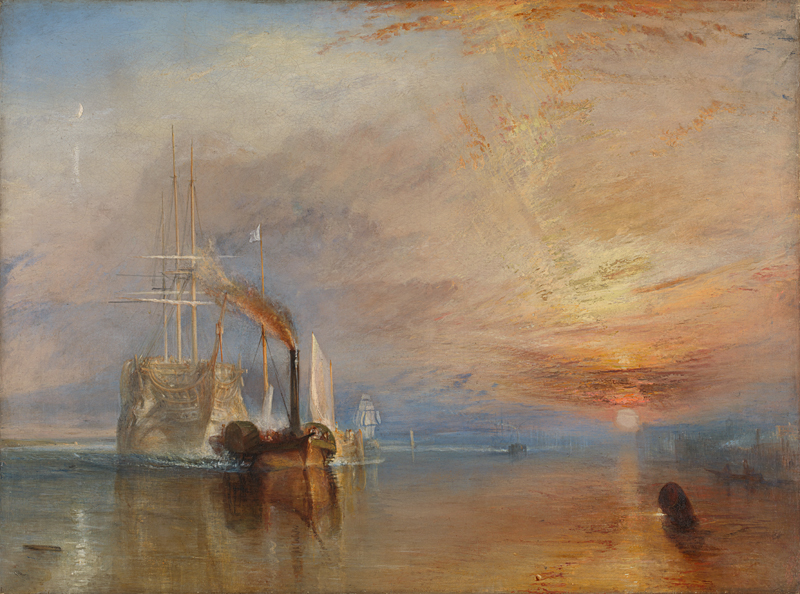As I crossed over the busy road from Charing Cross station one Saturday morning in May, a year after the new Millennium had started, my head still pounded with work issues. It had been a tough week in my fledgling IT career, proving myself with some particularly complicated problems to solve. I was exhausted but I knew I needed this outing for my own wellbeing. Across the road my destination was in sight, a grand public building housing some of the nation’s favourite works of art, The National Gallery. I could see the familiar symmetrical shape of the building along with the grand dome that sat atop the main entrance, with stone pillars either side standing to attention like roman centurions guarding the treasures inside. At their lofty position, they also seemed to be keeping an eye on all the ant-sized people wandering around in Trafalgar Square below.
Safely across the road, the short tree lined pavement led me closer to the place which I had come to think of my sanctuary. It was a warm day and I had to remove my coat, a breeze finding the back of my neck and giving me a refreshing lift. I was in the middle of London, with people walking past me hurriedly, but I knew that as soon as I got inside, I would feel differently, as I had done so many times before. I walked along the edge of the square, past the ants, who by now were human-sized, wearing that tourist uniform of jeans, rucksack, and all-weather jacket, with a camera around their neck ready to capture memories.
I was now at the foot of the stone stairs leading up to the centurions. As I alighted, I passed a tourist couple busy looking at their London A-Z and sipping coffee from paper cups, the smell making me wish I had bought one at the station. I side stepped some other people, and was then at the top, ready to enter. The automatic glass doors opened for me and I stepped into the light, airy entrance hall. Immediately my thoughts began to shift away from work, as there was too much beauty to behold here instead. I wondered how so much light came in, but I soon saw the source, the dome that was so prominent outside also housed leaded windows above beautifully decorated fresco panels and finials. The hall was full of marble pillars, plinths, artworks, and leafy potted plants, looking like a magnificent Roman palace, more than worthy of holding the treasures within. Grand wooden doorways and decorated arches seemed to lead in all sorts of directions, but I chose the one in front of me, above two flights of grey stone steps. I grasped the cool metal rail as I ascended, to go through a double doorway at the top, which would lead me into the heart of the gallery.
The Central Hall was the place that connected each of the gallery’s wings, of which there were four, covering all the compass directions of north, south, east, and west. The rich red jacquard wallpapered walls, along with more sets of black gilt topped marble pillars, held up another rectangular skylight which also flooded light in. The most dominant works in this room were two beautiful horse paintings in gilt frames, created by George Stubbs. To settle myself, I sat for a while on one of the wooden benches which was smooth to the touch, worn by years of people sitting. I marvelled at the accuracy of these pieces of art, depicting each thoroughbred horse’s coat, muscular form, and expression almost photographically. My next destination, as a matter of habit, was the area with the most modern paintings that this gallery contained, the East Wing.
I stopped first at the Canaletto paintings, taking in some of the light that he depicted so well. The light in the room echoed this and I imagined myself as a participant in one of them, at the Grand Regatta on the canal, hearing the water slosh past me. The escapism gradually lifted my shoulders and again more thoughts of work disappeared. However, the real stars of this wing were the 19th century paintings, which, as I moved through the next double doorway, were now before me in all their impressionistic, pioneering glory. Bold colours and brush strokes were an immediate visual tonic, and I felt my optimism returning. A crowd gathered as usual around Van Gogh’s Sunflowers, but I knew exactly where I was going. To the room which housed an artist’s paintings that never failed to fix my current state of mind, the Turner Room. Dramatic paintings of the turbulent sea and majestic ships with their crew, seemed to come out of the canvas at me, and I felt the freshness of the sea wash away the cobwebs of my mind.
I always finished at the last painting, The Fighting Temeraire. This was a large work depicting a heroic ship used in the Battle of Trafalgar, which was then due to be retired and broken up. The ghostly white figure of the ship, and the contrast of the dirty steam driven tugboat pulling it along, had a certain hopeful melancholy for me. The bench in front of it was empty, so I sat a while and contemplated why. Perhaps it echoed that stage in my life where I was moving into the unknown with my new career, feeling under confident and slightly sad about leaving the old, familiar one. I then remembered that the previous job had outlived its usefulness for me, like the ghostly ship, and now I must break up thoughts of it to fully embrace the fresh opportunities available. Feeling newly brave and confident, I picked up my bag and coat and walked towards the exit ready to leave, hovering slightly as the smell of fresh coffee from the gallery café wafted towards me.


